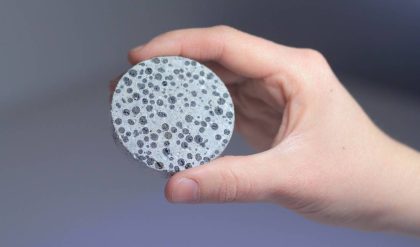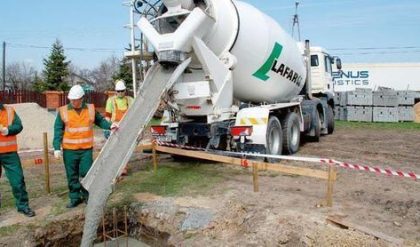There are four stages in the manufacture of portland cement: (1) crushing and grinding the raw materials, (2) blending the materials in the correct proportions, (3) burning the prepared mix in a kiln, and (4) grinding the burned product, known as “clinker,” together with some 5 percent of gypsum (to control the time of set of the cement). The three processes of manufacture are known as the wet, dry, and semidry processes and are so termed when the raw materials are ground wet and fed to the kiln as a slurry, ground dry and fed as a dry powder, or ground dry and then moistened to form nodules that are fed to the kiln.
Crushing and grinding
All except soft materials are first crushed, often in two stages, and then ground, usually in a rotating, cylindrical ball, or tube mills containing a charge of steel grinding balls. This grinding is done wet or dry, depending on the process in use, but for dry grinding the raw materials first may need to be dried in cylindrical, rotary dryers.
Soft materials are broken down by vigorous stirring with water in wash mills, producing a fine slurry, which is passed through screens to remove oversize particles.
Blending
A first approximation of the chemical composition required for a particular cement is obtained by selective quarrying and control of the raw material fed to the crushing and grinding plant. Finer control is obtained by drawing material from two or more batches containing raw mixes of slightly different composition. In the dry process these mixes are stored in silos; slurry tanks are used in the wet process. Thorough mixing of the dry materials in the silos is ensured by agitation and vigorous circulation induced by compressed air. In the wet process the slurry tanks are stirred by mechanical means or compressed air or both. The slurry, which contains 35 to 45 percent water, is sometimes filtered, reducing the water content to 20 to 30 percent, and the filter cake is then fed to the kiln. This reduces the fuel consumption for burning.
Burning
The earliest kilns in which cement was burned in batches were bottle kilns, followed by chamber kilns and then by continuous shaft kilns. The shaft kiln in a modernized form is still used in some countries, but the dominant means of burning is the rotary kiln. These kilns—up to 200 metres (660 feet) long and six metres in diameter in wet process plants but shorter for the dry process—consist of a steel, cylindrical shell lined with refractory materials. They rotate slowly on an axis that is inclined a few degrees to the horizontal. The raw material feed, introduced at the upper end, moves slowly down the kiln to the lower, or firing, end. The fuel for firing may be pulverized coal, oil, or natural gas injected through a pipe. The temperature at the firing end ranges from about 1,350 to 1,550 °C (2,460 to 2,820 °F), depending on the raw materials being burned. Some form of heat exchanger is commonly incorporated at the back end of the kiln to increase heat transfer to the incoming raw materials and so reduce the heat lost in the waste gases. The burned product emerges from the kiln as small nodules of clinker. These pass into coolers, where the heat is transferred to incoming air and the product cooled. The clinker may be immediately ground to cement or stored in stockpiles for later use.
In the semidry process the raw materials, in the form of nodules containing 10 to 15 percent water, are fed onto a traveling chain grate before passing to the shorter rotary kiln. Hot gases coming from the kiln are sucked through the raw nodules on the grate, preheating the nodules.
Dust emission from cement kilns can be a serious nuisance. In populated areas it is usual and often compulsory to fit cyclone arrestors, bag-filter systems, or electrostatic dust precipitators between the kiln exit and the chimney stack.
Modern cement plants are equipped with elaborate instrumentation for control of the burning process. Raw materials in some plants are sampled automatically, and a computer calculates and controls the raw mix composition. The largest rotary kilns have outputs exceeding 5,000 tons per day.
Grinding
The clinker and the required amount of gypsum are ground to a fine powder in horizontal mills similar to those used for grinding the raw materials. The material may pass straight through the mill (open-circuit grinding), or coarser material may be separated from the ground product and returned to the mill for further grinding (closed-circuit grinding). Sometimes a small amount of a grinding aid is added to the feed material. For air-entraining cements (discussed in the following section) the addition of an air-entraining agent is similarly made.
Finished cement is pumped pneumatically to storage silos from which it is drawn for packing in paper bags or for dispatch in bulk containers.



Comments are closed.